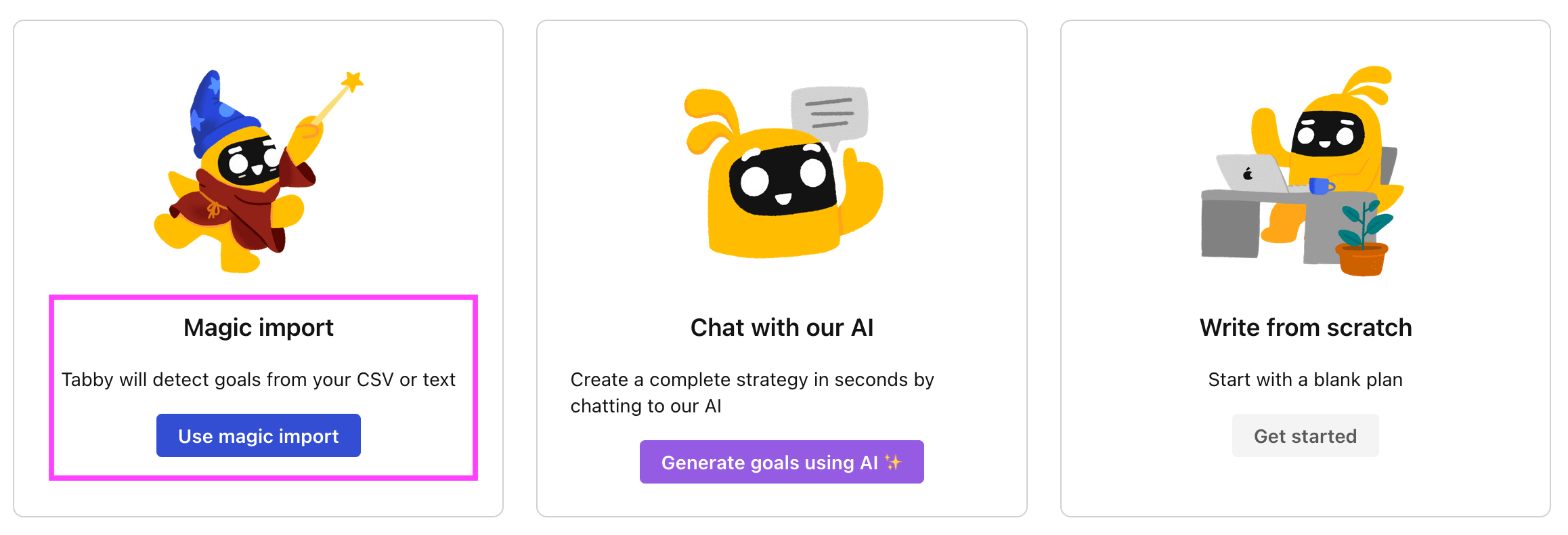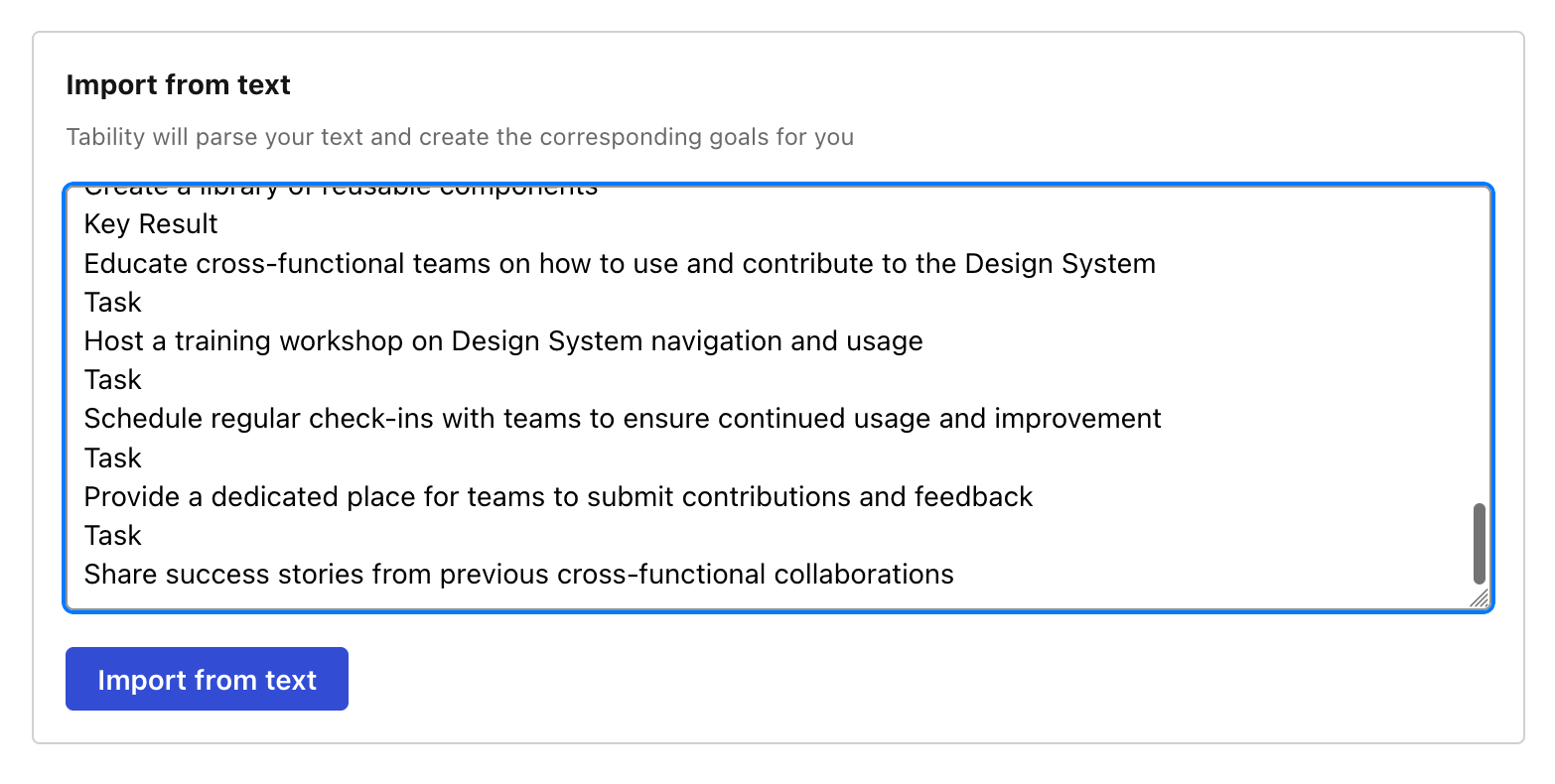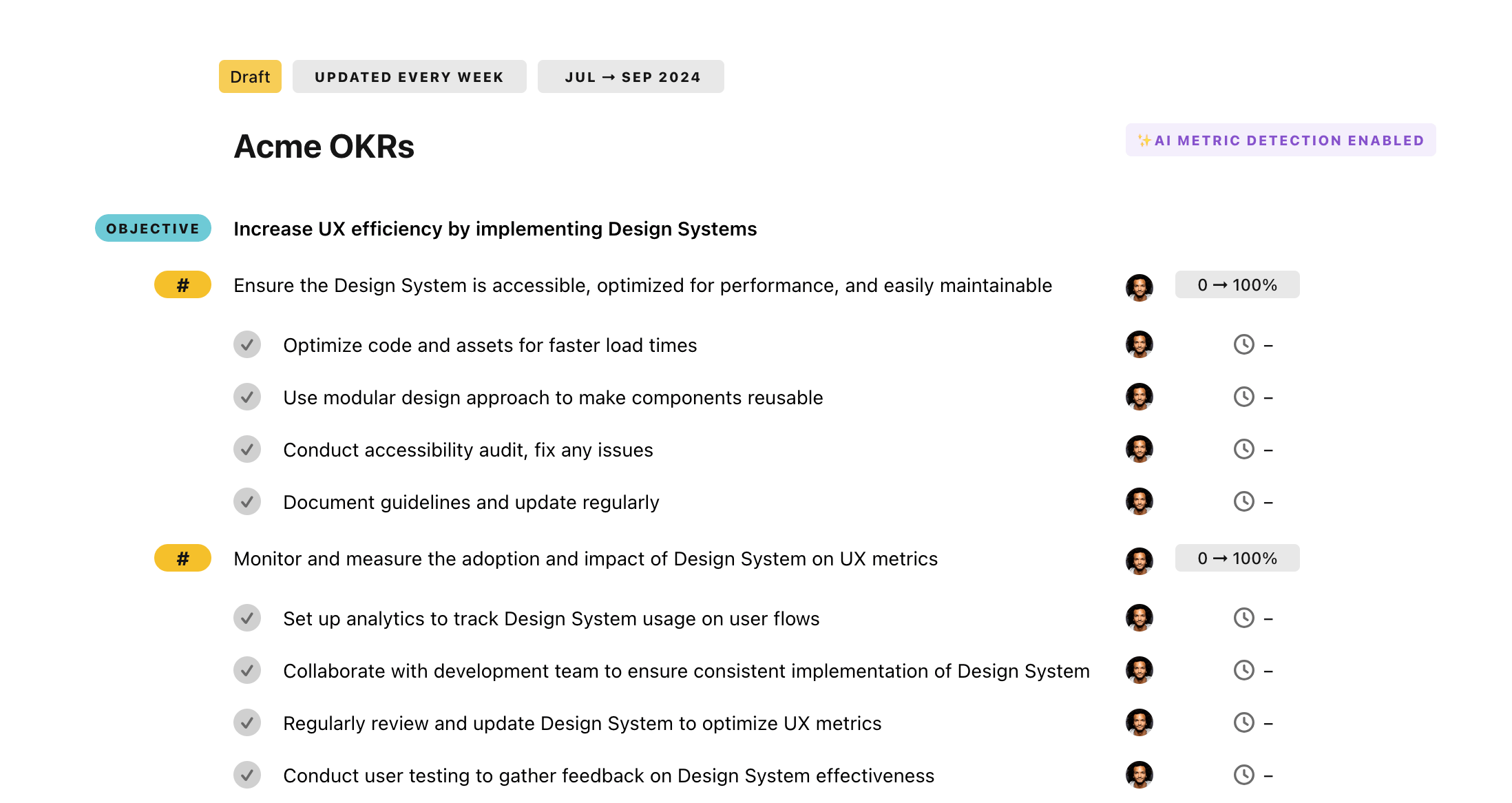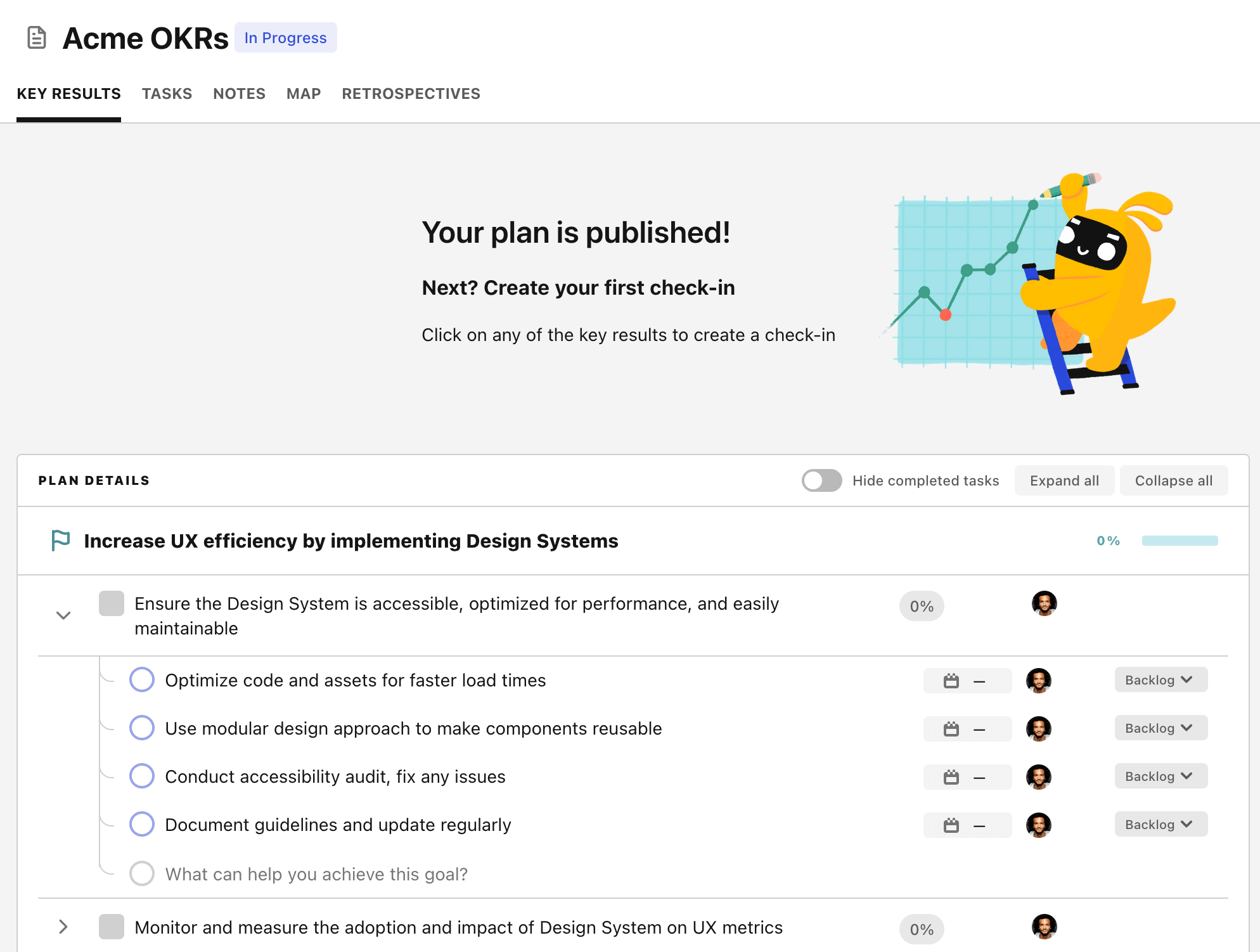OKR template to publish a high-value social impact report
Your OKR template
Another objective under this OKR is to gather necessary data from all relevant departments by the end of week 4. This data collection is essential for the report generation, and involves liaising with the heads of each department to ensure all required data types are compiled accurately and timely.
The draft of the social impact report should be prepared and finalized by week 8. This does not only involve actual writing but also its review, and ensuring that the language used is clear and concise. The outline of the report also needs to be developed for this purpose.
To ensure the realization of these objectives, various initiatives have been put in place. For instance, there need to be efforts towards thorough compilation of the report and ensuring the content is finalized before distribution. Distribution of the report by week 12 is another key initiative in this OKR.
ObjectivePublish a high-value social impact report
KRDistribute the report to all stakeholders by week 12
Compile the report thoroughly and finalize the content
Distribute the finalized report by week 12
Identify all necessary stakeholders to receive the report
KRGather relevant data from all departments by week 4
Ensure full data compilation before the end of week 4
Route requests to each department head for data collection
Identify necessary data types across all departments
KRDraft and finalize the report by week 8
Develop an outline for the report
Review, edit and finalize the report
Draft the report in clear, concise language
How to edit and track OKRs with Tability
You'll probably want to edit the examples in this post, and Tability is the perfect tool for it.
Tability is an AI-powered platform that helps teams set better goals, monitor execution, and get help to achieve their objectives faster.
With Tability you can:
- Use AI to draft a complete set of OKRs in seconds
- Connect your OKRs and team goals to your project
- Automate reporting with integrations and built-in dashboard
Instead of having to copy the content of the OKR examples in a doc or spreadsheet, you can use Tability’s magic importer to start using any of the examples in this page.
The import process can be done in seconds, allowing you to edit OKRs directly in a platform that knows how to manage and track goals.
Step 1. Sign up for a free Tability account
Go tohttps://tability.app/signup and create your account (it's free!)
Step 2. Create a plan
Follow the steps after your onboarding to create your first plan, you should get to a page that looks like the picture below.

Step 3. Use the magic importer
Click on Use magic import to open up the Magic Import modal.
Now, go back to the OKR examples, and click on Copy on the example that you’d like to use.

Paste the content in the text import section. Don’t worry about the formatting, Tability’s AI will be able to parse it!

Now, just click on Import from text and let the magic happen.

Once your example is in the plan editor, you will be able to:
- Edit the objectives, key results, and tasks
- Click on the target 0 → 100% to set better target
- Use the tips and the AI to refine your goals
Step 4. Publish your plan
Once you’re done editing, you can publish your plan to switch to the goal-tracking mode.

From there you will have access to all the features that will help you and your team save hours with OKR reporting.
- 10+ built-in dashboards to visualise progress on your goals
- Weekly reminders, data connectors, and smart notifications
- 9 views to map OKRs to strategic projects
- Strategy map to align teams at scale